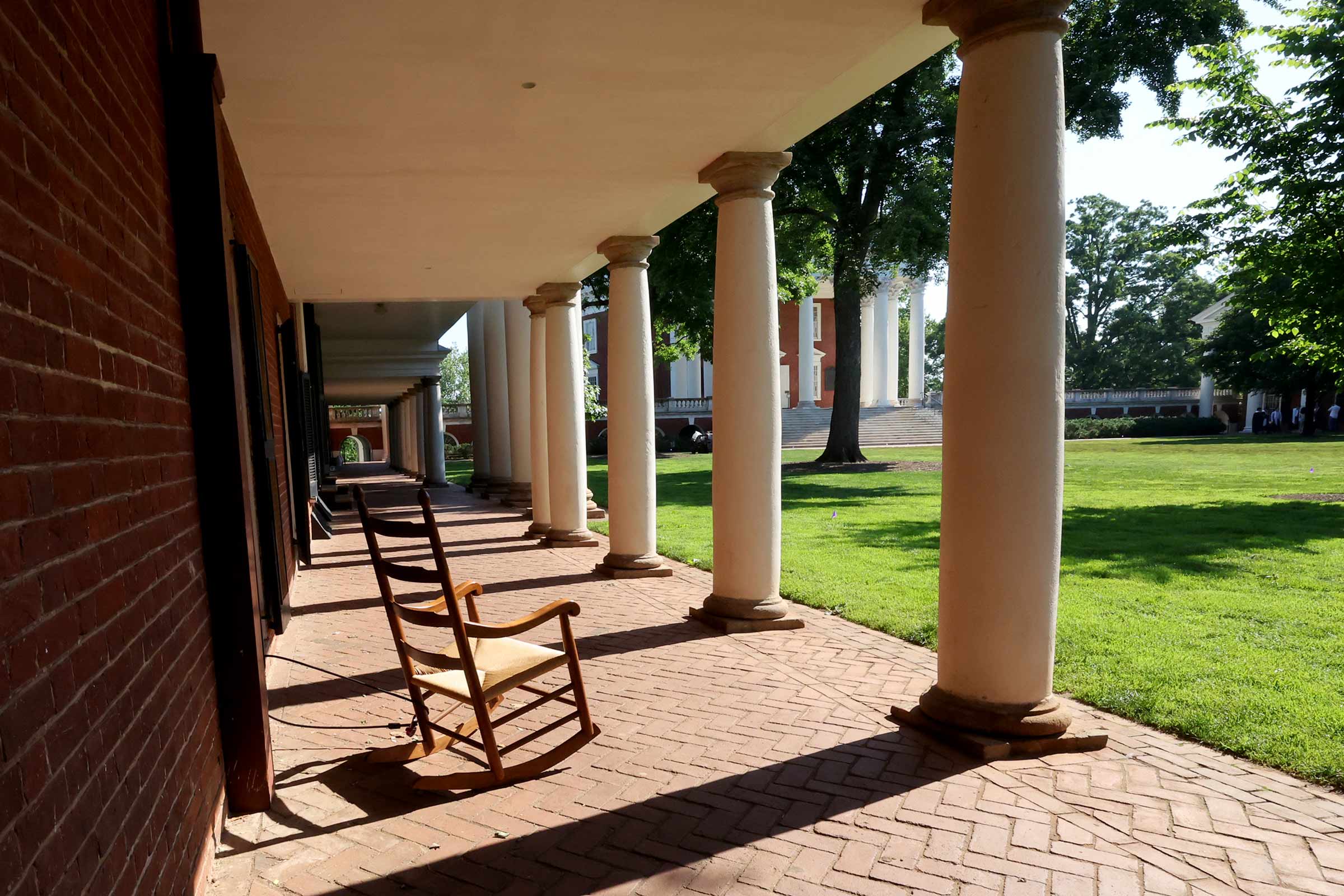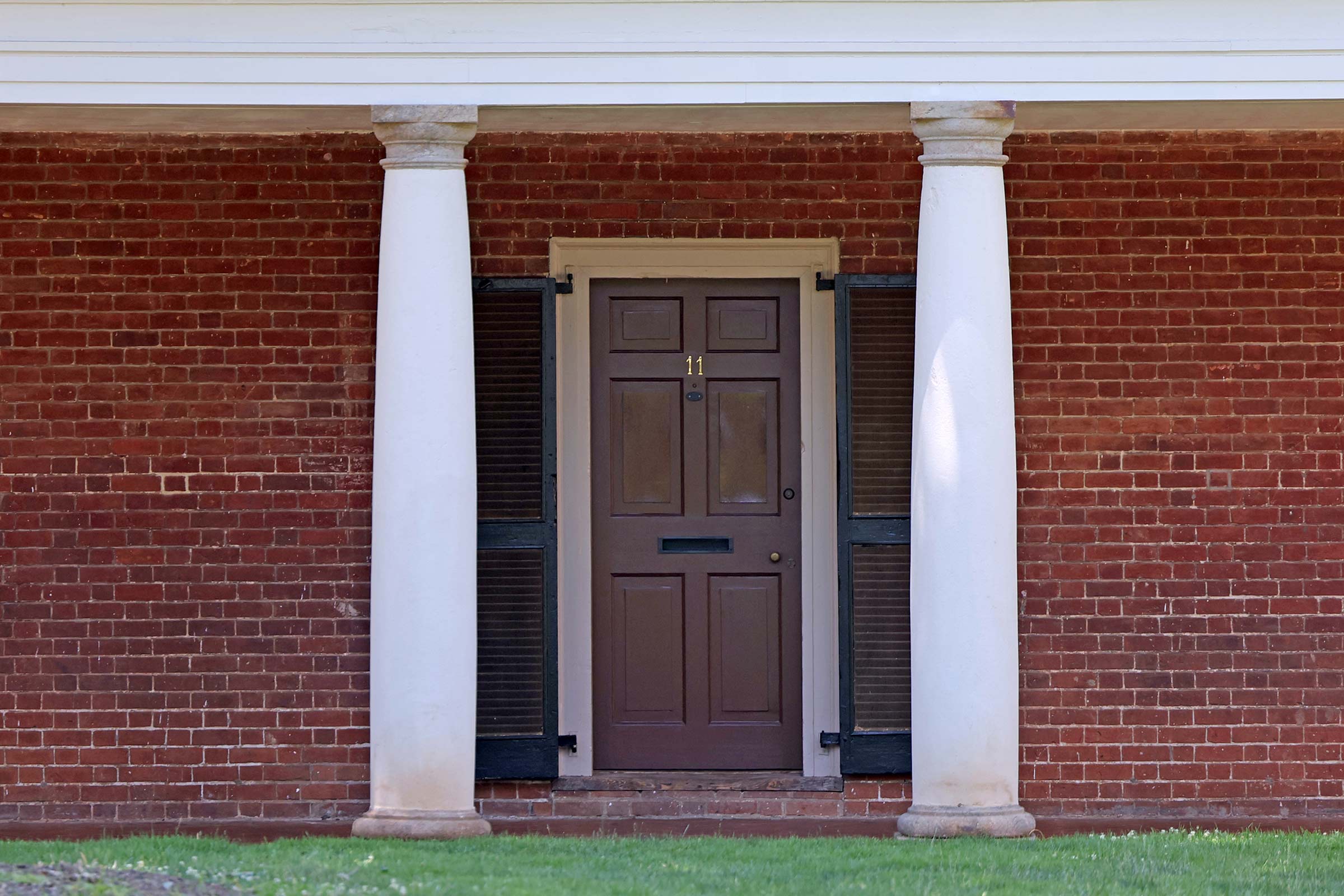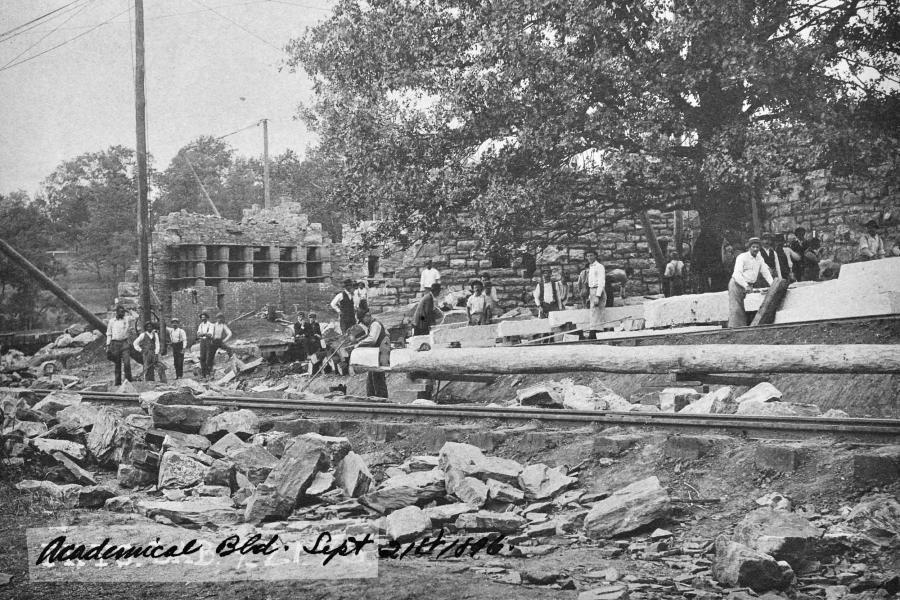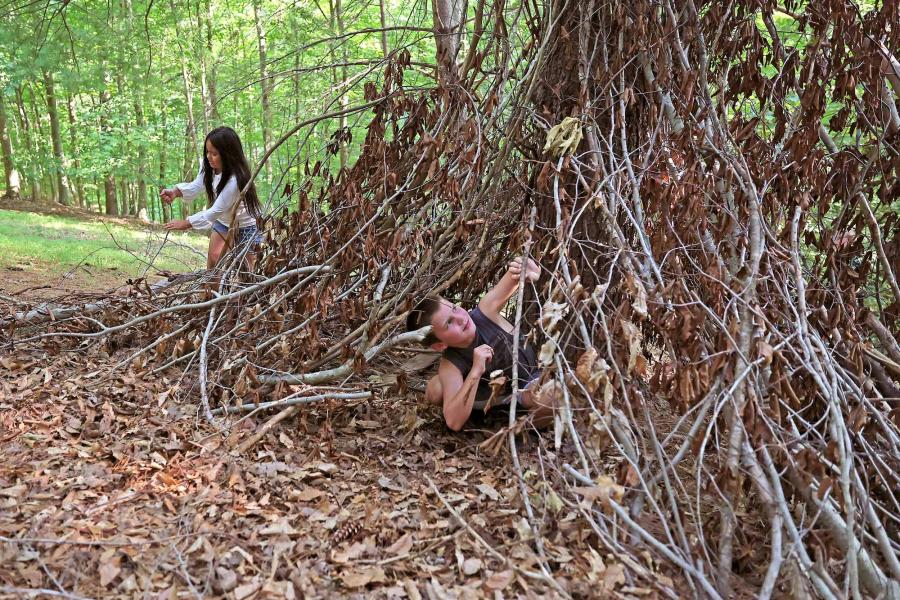In designing the University of Virginia's Academical Village, Thomas Jefferson put a lot of thought into the pavilions. But he was also concerned about the student rooms.
That's one lesson from the recently completed historic structure report on the student rooms on the Lawn and Range, MCWB Architects of Albany, New York, and Williamsburg prepared.
"Jefferson clearly did put thought into (the students' rooms)," Mark Kutney, a historic conservator with Facilities Management, said. "I think when you look at the pavilions, he had a lot of fun in designing them. When it came to the dormitories, it was more about the whole and how it's going to work."
While the pavilions were Jefferson's showpieces, the student rooms were a group effort.
"Even though it is the more modest of the construction, there are so many more hands involved," Kutney said. "When we did a historic structures report for the pavilions, there was typically one mason, one carpenter. With the student rooms, almost everybody is involved."
"We're starting to get a sense for the diversity of the construction crew," said Jeff Klee, one of the historic architects for MCWB Architects, who examined the rooms and worked on the report. "Seeing different solutions to the same sort of problems with respect to framing and masonry, from one room to the next, or one section of rooms to the next, was fascinating. And we've only really scratched the surface - particularly with respect to brick masonry - of really understanding who is building what across the Academical Village."
They have been able to name specific craftsmen who contributed, such as Richard Ware, a builder who came down from Philadelphia, and Sam, an enslaved worker who was involved in nearly every student room.

"We've got dozens of names - individual workers, or contractors," Klee said. "And then in a few cases, individual laborers, so we're able to kind of paint a pretty comprehensive picture of that workforce. This is an unbelievably well-documented construction project, where we can talk with so much knowledge about individual contributions - when they showed up, when they left, the work that they did, how much they were paid."
Pavilion VII was the first built and then the student rooms were extended off that. By examining the rooms, Klee said an observer can see where Jefferson and his builders made decisions in real time as the construction was going on.
"The first set of rooms south of Pavilion VII were the first set of rooms to be built," Klee said. "And Jefferson originally intended to have 10 rooms flanking each pavilion and for that to take 100 feet, which gives you 10 feet per room. With the brick partition, you're closer to 9 feet per room, then take out another foot and a half for the fireplace and the closets. Seven and a half feet is tiny, so they adjusted and only built nine rooms."
These rooms were still thought to be small - in fact, they were known for years as "Bachelor's Row" because they were used as singles instead of doubles. When the carpenters built the second set of rooms on the north side of Pavilion VII, they adjusted again and made them larger.
"You don't really perceive this unless you've spent time in one of those rooms and seen how really small it is," Klee said. "But you can perceive it, if you look closely from the Lawn, because the size of the rooms affects the column placement. There's always a column at a partition, so they frame door openings. If you're adjusting the width of the size of the rooms, you're adjusting the column spacing."
The report, which is important in informing on the preservation of original fabric and/or design during maintenance and renovation work, also showed that the workmen building the Academical Village stayed in the student rooms while building the pavilions.
"There had to be some logic to when the student rooms were built relative to the pavilions," Kutney said. "You couldn't just do all the pavilions and then come back and do the student rooms. You had to do them sequentially."

Klee said in preparing the report, they made a minute investigation of the Academical Village.
"We went through every single room. We looked at every door, we looked at every door casing, and we looked at every window casing, mantel and floor," Klee said. "We went underneath each one; we looked at all the joists and flooring from those crawl spaces. The investigation of the physical fabric proceeded simultaneously with the documentary research."
The Academical Village was Jefferson's design, envisioning students and faculty living and working together. But not all members of the Board of Visitors shared Jefferson's vision.
Klee said that Jefferson argued with the Board of Visitors about student accommodations. As the Academical Village was being built, several of the board members were concerned that the flat roofs would overheat the rooms, that they would leak and that they would be too expensive.
"In the middle of the construction project, they tried to persuade Jefferson to abandon the one-story long rows of dormitories for the Ranges," Klee said. "They actually developed a design for a barracks-style dorm, two or three stories tall with shared rooms and internal hallways. They made the case that it would be cheaper and more comfortable. Jefferson made a show of listening to them, but clearly didn't do it."
Klee also noted that when the Board of Visitors built 12 new student rooms on Monroe Hill in 1848, they copied the design of the Range rooms, with one exception - the roofs were pitched.









